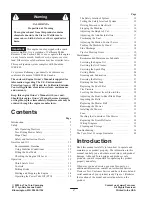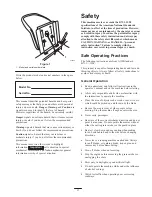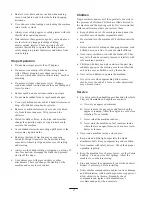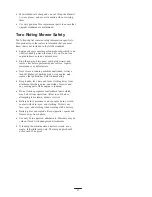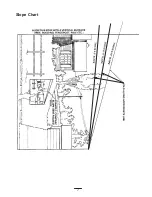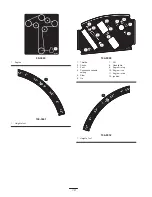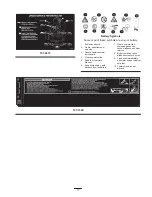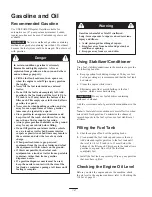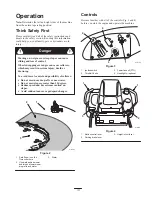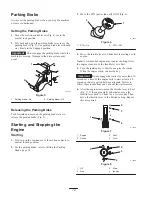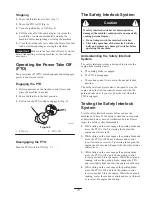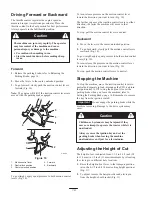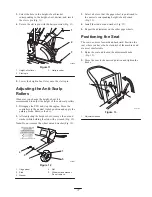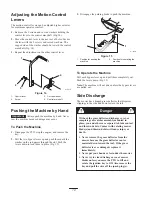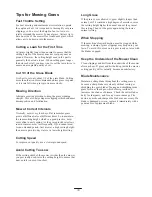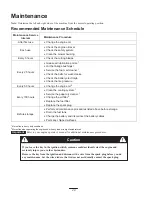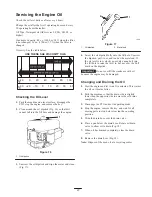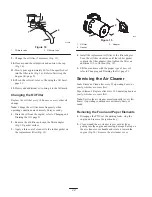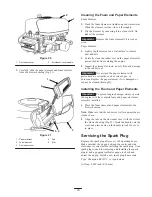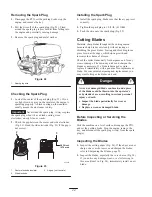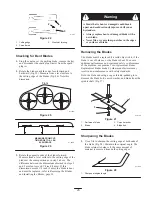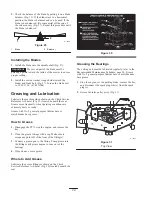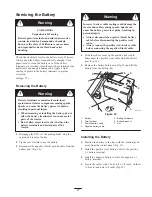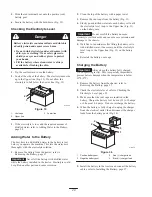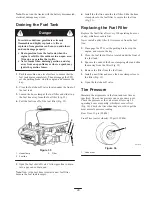
14
Parking Brake
Always set the parking brake when you stop the machine
or leave it unattended.
Setting the Parking Brake
1. Move the motion control levers (Fig. 4) out to the
neutral lock position.
2. Pull back and up on the parking brake lever to set the
parking brake (Fig. 5). The parking brake lever should
stay firmly in the Engaged position.
Important
Do not engage the parking brake while the
machine is moving. Damage to the drive system may
occur.
1
2
m–4121
Figure 5
1.
Parking brake—On
2.
Parking brake—Off
Releasing the Parking Brake
Push forward and down on the parking brake lever to
release the parking brake (Fig. 5).
Starting and Stopping the
Engine
Starting
1. Sit down on the seat and move the motion controls to
neutral locked position.
2. Set the parking brake; refer to Setting the Parking
Brake, page 14.
3. Move the PTO (power take off) to Off (Fig. 6).
1
m–4201
2
Figure 6
1.
PTO—On
2.
PTO—Off
4. Move the throttle lever to Choke before starting a cold
engine.
Note: A warm or hot engine may require choking. After
the engine starts, move the throttle lever to Fast.
5. Turn the ignition key to Start to energize the starter.
When the engine starts, release the key.
Important
Do not engage the starter for more than 10
seconds at a time. If the engine fails to start, allow a 60
second cool-down period between attempts. Failure to
follow these instructions can burn out the starter motor.
6. After the engine starts, move the throttle lever to Fast
(Fig. 7). If the engine stalls or hesitates, move the
throttle lever back to Choke for a few seconds. Then
move the throttle lever to the desired setting. Repeat
this as required.
m–5126
4
3
2
1
Figure 7
1.
Engine
2.
Choke
3.
Fast
4.
Slow
m–4268
1
2
3
4
Figure 8
1.
Off
2.
Run
3.
Start
4.
Ignition


